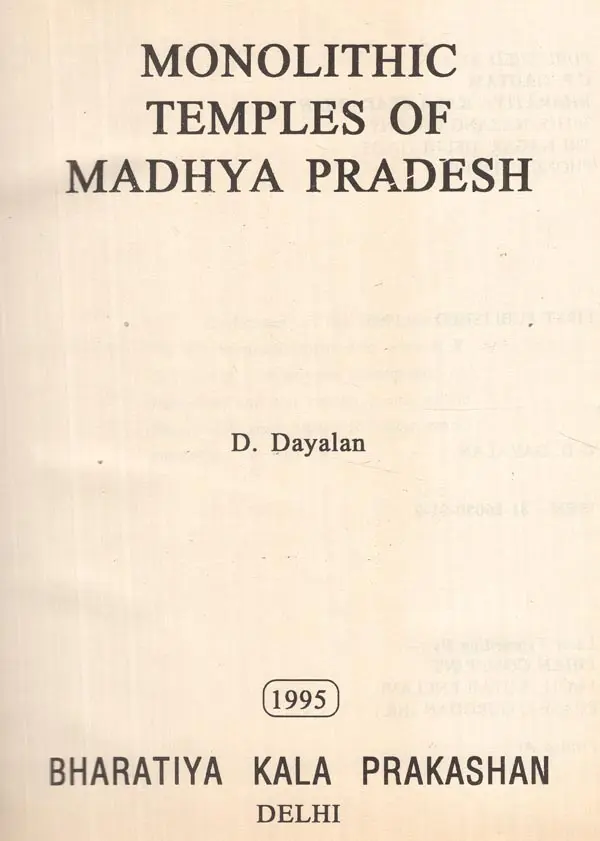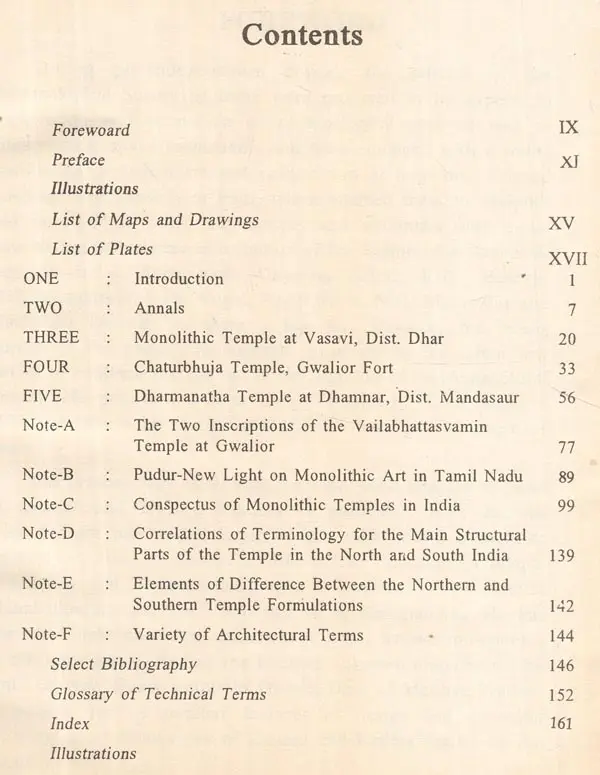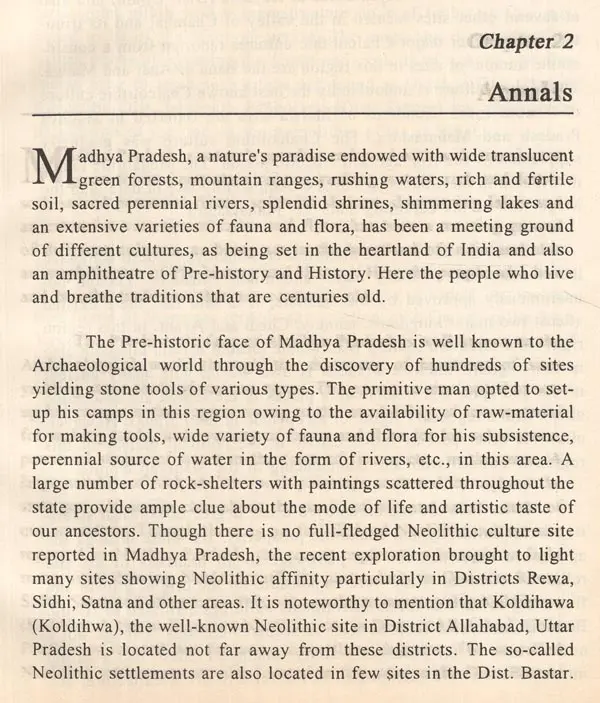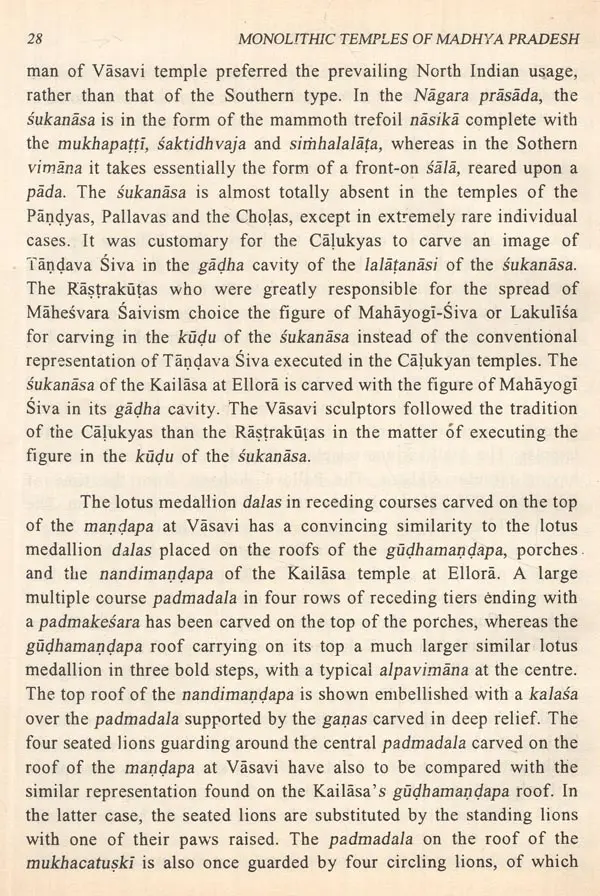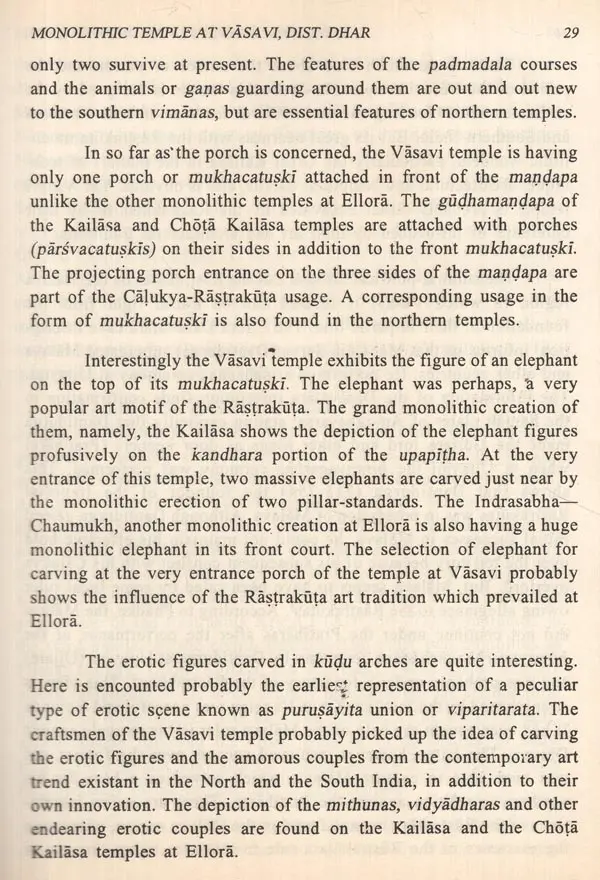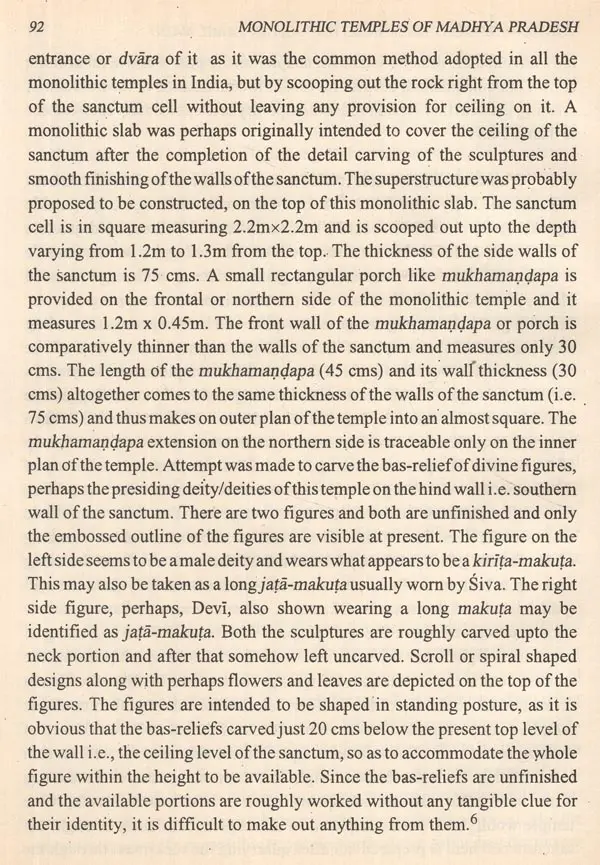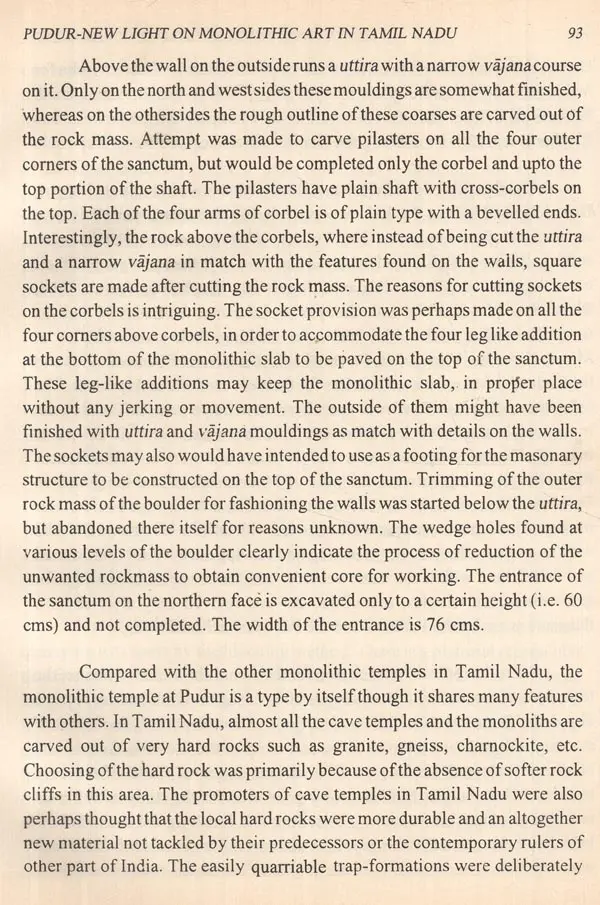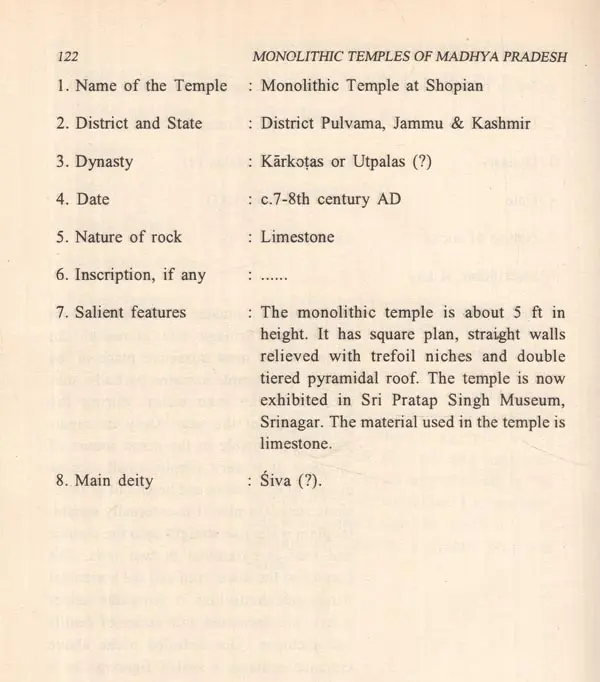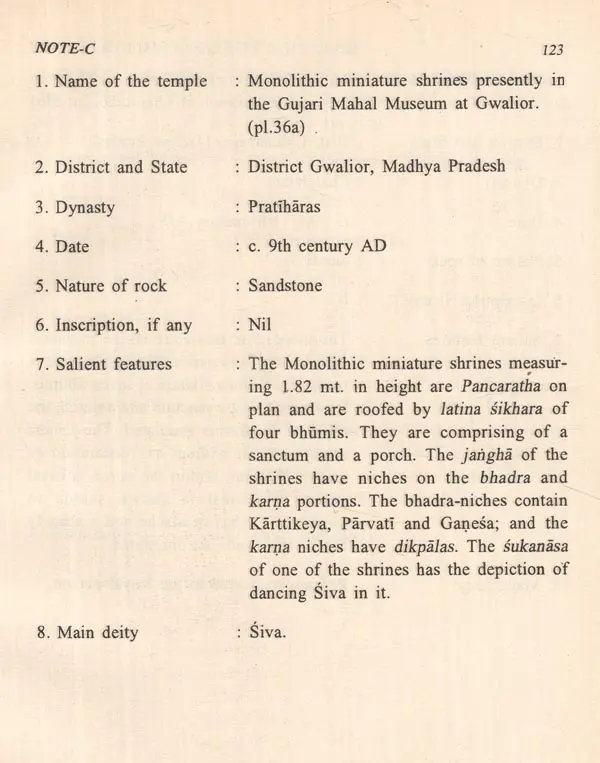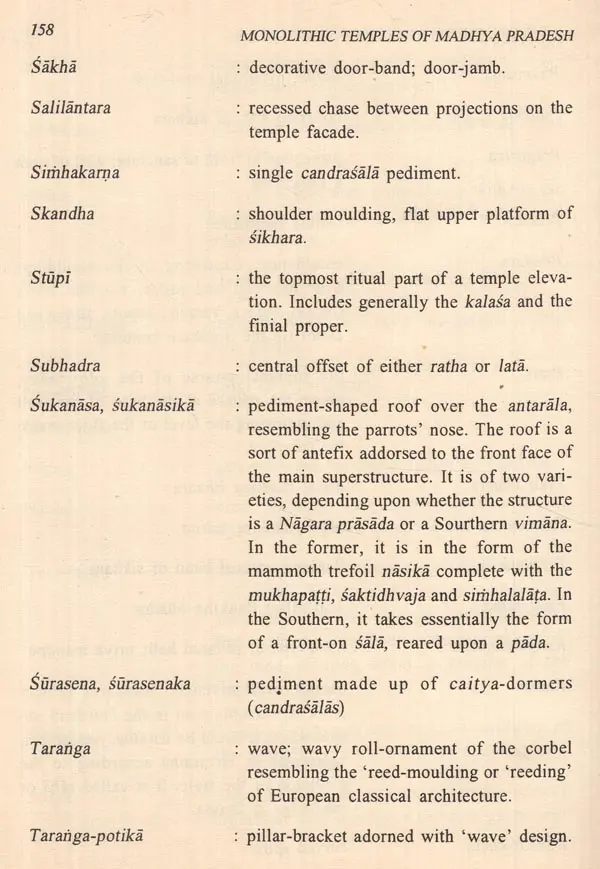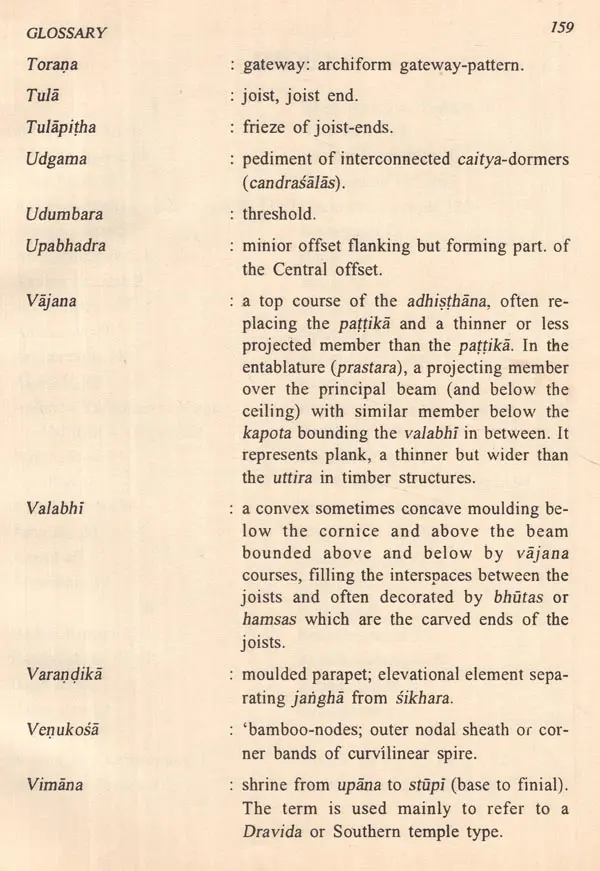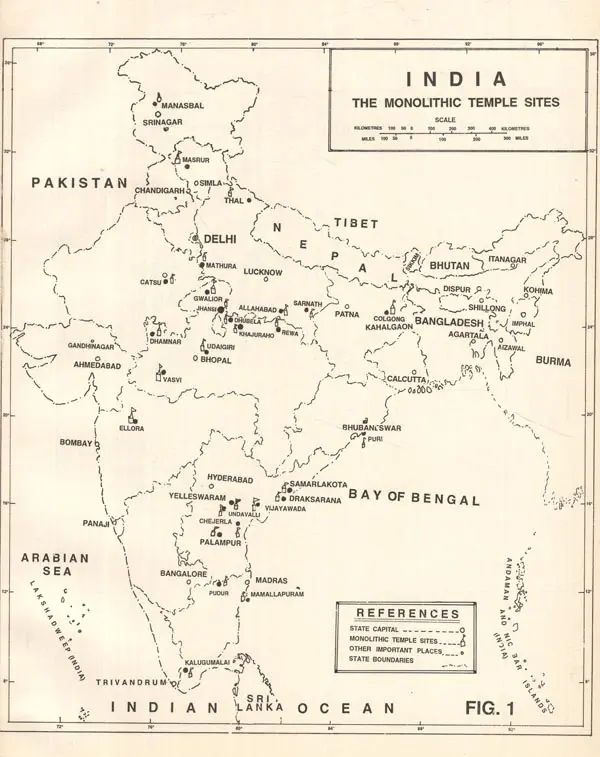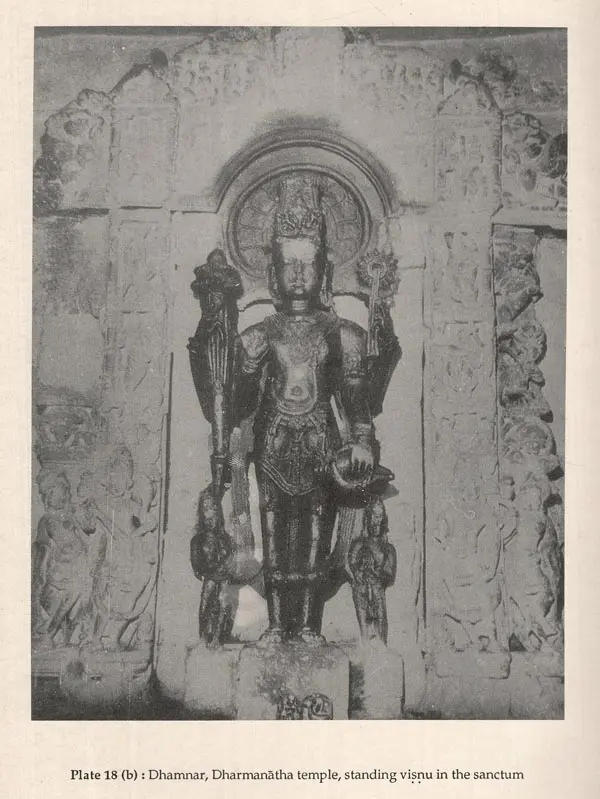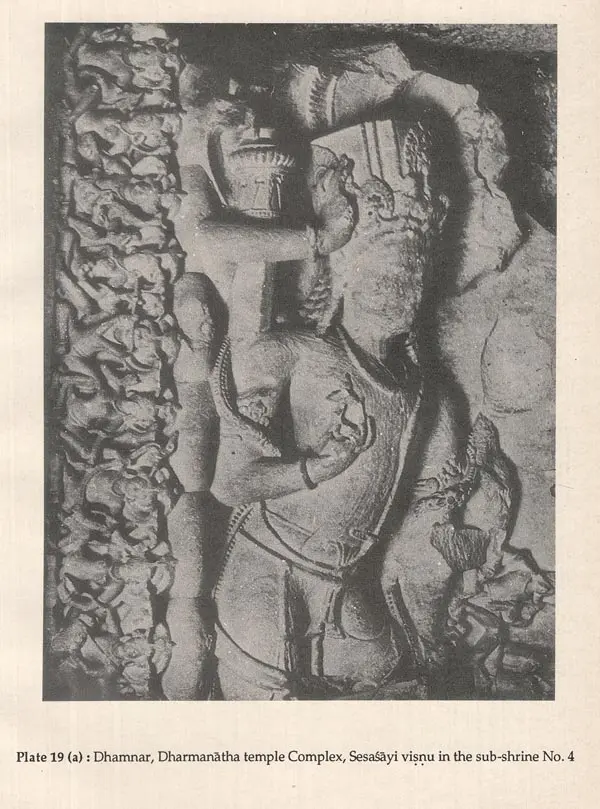
Monolithic Temples of Madhya Pradesh (An Old and Rare Book)
Book Specification
| Item Code: | UAO090 |
| Author: | D. Dayalan |
| Publisher: | Bharatiya Kala Prakashan |
| Language: | English |
| ISBN: | 8186050019 |
| Pages: | 244 (Throughout B/w Illustrations) |
| Cover: | HARDCOVER |
| Other Details | 10.00 X 7.50 inch |
| Weight | 810 gm |
Book Description
The monolithic temples are the most revolutionary architectural design in the whole spectrum of Indian art. Madhya Pradesh, being a meeting ground of different cultures, is endowed with three major monolithic creations in addition to one of elementary stage at Udaigiri and a number of miniature monolithic models of a little later period. The chief aim of this book is to focus the evolution, technique, architectural style and iconographio religious perspective of the monolithic legacy of Madhya Pradesh, in comparison with the monolithic wonders of other regions, both earlier to and later than them. The book also contains the first authentic information of the art and architectural elements of the cheese cake models at Vasavi and Pudur. which are noticed recently. The conspectus of almost all the monolithic temples in India alongwith photographic illustrations and the chart showing the correlations of terminology for the main structural parts of the temple in the North and South India are some of the notable supplementaries of the book. The awe-inspiring monolithic temples are shown in a superb selection of photographs integrated with the text, many of them for the first time brought out here. The line drawings present the details of temple plans and their architectural features.
Dr D. Dayalan presently occu pying the position of the Deputy Superintending Archaeologist in the Archaeological Survey of India. obtained his master's degree in Ancient History and Archaeology from the University of Madras and the Post-Graduate Diploma in Archaeology from the School of Archaeology. New Delhi. He got first rank in M.A. in Madras University for which he received the award. He obtained Doctorate Degree from the Nagpur University, Nagpur in 1990.
Since his inception in the Archaeological Survey of India in 1984, he has been an active field worker in the exploration and excavation of ancient sites. He has extensively explored several districts of Tamil Nadu and Kerala and actively participated in major excavations like Ramapuram, Vallam, Aurovalle. Darasuram, Arikamedu, Mamallapuram, etc.
Dr Dayalan, author of the book, Early Temples of Tamil Nadu: Their Role in Socio-Economic Life (c.A.D. 550-925) has contributed several research papers to leading journals on Protohistoric and Historical Archaeology. Epigraphy, Numis matics, Indian Art and Architecture.
In 1993, he had been invited to deliver lectures in the Uppsala University, Sweden and he also paid academic visit to Britain the same year.
The monolithic temples are the most revolutionary architectural design in the whole spectrum of Indian art. Notwithstanding the inception of the monolithic movement is noticed in the early centuries of the Christian era from the Buddhist caves of Western India and at Sankaram in Andhra Pradesh in the form of monolithic stūpas, the carliest application of this technique in the Brahmanical sacred architec ture, as known today, found at Udaigiri in Madhya Pradesh. This novel experiment though rudimentary at Udaigini gained an outstanding achievement in the deep south at Mamallapuram under the Patronage of the Pallavas. The celebrated monolithic rathas here are not only the elequent testimony to the excellence of their craft-potential but also are of the authentic model of structural temples of coeval age on perishable materials. After a few insignificant endeavours in Andhra Pradesh, this architectural idiom reached its climax at Ellora. The Great Kailasa monolithic complex here is undisputedly one of the most ambitious rock-architectural projects ever undertaken anywhere. After this, the awe-inspiring monolithic treand attracted many entrepreneurs through out India and experienced in their regions. Madhya Pradesh is endowed with three major monolithic creations in addition to the one of elemen tary stage at Udaigiri and a number of miniature monolithic models of little later period.
These monoliths, not only focus on the evolution, technique, architectural style and cult pattern of the monolithic legacy of Madhya Pradesh, but are the authentic representation of the structural temples of coeval age on perishable materials. The author's chief if not the sole aim was to give an authetic presentation of these monoliths in comparison with the monolithic wonders of other regions, both earlier to and later than them. The author would like to think that the scheme of study and the integrated assessment of the constituent art-clements of these mono liths in the main stream of Indian art, has not been presented so far in the manner preferred in this book. Moreover, this book contain the first detailed authentic presentation of the art and architectural elements of the Cheese-cake models at Vasavi and Pudur, which are noticed re cently.
During pre-Independence period, the officers of the Achaeological Survey of India were groomed to be experts in exploration and excavation of archaeological sites as well as conservation of old monuments and were equipped with a sound knowledge of Indian art and culture and at least one classical language like Sanskrit or Palti, which enabled them to decipher old inscriptions, coins, manuscripts and sculptures with equal ease and make original contribution of the History and Archaeol ogy of India. Such were Dayaram Sahni, R.D. Banerji, D.R.Bhandarkar, J.Ph. Vogel, Aurel Stein, N.G. Majumdar and Kashinath Dikshit, to name a few Dr. Dayalan, the young author of the present monograph, promises by his talent and ability to continue the age old noble tradition of the Achaeolocal Survey. He published a book Early Temples of Tamil Nadu in 1992 and this is his second publication within just a couple of years.
The present book deals with the monolithic temples of India in general and Madhya Pradesh in particular. Here he has studied from new angles some of the well known monolithic monuments, like the Kailasa at Ellora, the Chaturbhuja temple at Gwalior, the Dharmanatha temple at Dhamnar, the Rathas at Mahabalipuram and the Vettuvankovil at Kalugumalai. He has also shed light on a few unknown or lesser known monuments of the same genre. Among the hitereto unknown monuments the ninth century Vasavi temple in District Dhar of Madhya Pradesh is notable for its peculiar features of design and elevation including a continuous row of Kailasa and Kailasa figures on the mandapa wall.
The tradition of rock-cut architecture in India developed during the Mauryan period in and around ancient Magadha. The caves ex cavated into the hard rock in the Barabar and Nagarjuni hills and the outcrop at Sitamarhi near Gaya are first of its kind in India. This, in the succeeding centuries, spread widely and resulted in the blossom ing of quite a large number of rock-cut architectural centres almost all over India. The rock-architectural projects are mainly the petrified versions of the contemporary brick-and-timber or the humbler wattle mud-and-thatch structures. Initially the rock-cut enterprise was nur tured by the votaries of the Buddhist faith and later by the Jaina and Brahmanic faith as well. The Guptas, under whom the resurgence of Brahmanic faith took place on a national level, were perhaps the first to patronise Brahmanical cave excavations and the earliest of such an enterprise are to be seen in the cave temples at Udaigiri, near Vidisā. It would be vindicable to say that the Udaigiri caves to some extent form the legitimate precursors to the Calukyan enterprises coming slight later, followed by the Pallava and Pandya rock-art creation on the extreme south. One more credit to Udaigiri in addition to being the site for the first Brahmanical caves in India is that it has the earliest Brahmanical free-standing model frozen in rock. The Cave No. 7, locally known as tawa cave, is a monolithic temple, hewn out of a mass of rock into a hemisphere at the base and surmounted by a large flat stone in the form of a tawa (round baking plate). This monolith, despite of its imperfect sikhara form, has a well finished oblong chamber with an exquisitely fashioned lotus medallion on the ceiling. It is dedicated to Śiva as testified by the Saiva Pratihara on either side of the doorway. There is an inscription of a minister of Chandragupta II on its hind wall says that he excavated this out of devotion to God Sambhu while accompanying the emperor on a mission of world conquest. The Udaigiri monolith was not certainly born in a day. The germ of the monolithic idea lies in the carved out stūpas inside the rock-cut chaitya-halls of western India, and in the large stūpa forms at Sankaram, Andhra Pradesh.
Book's Contents and Sample Pages